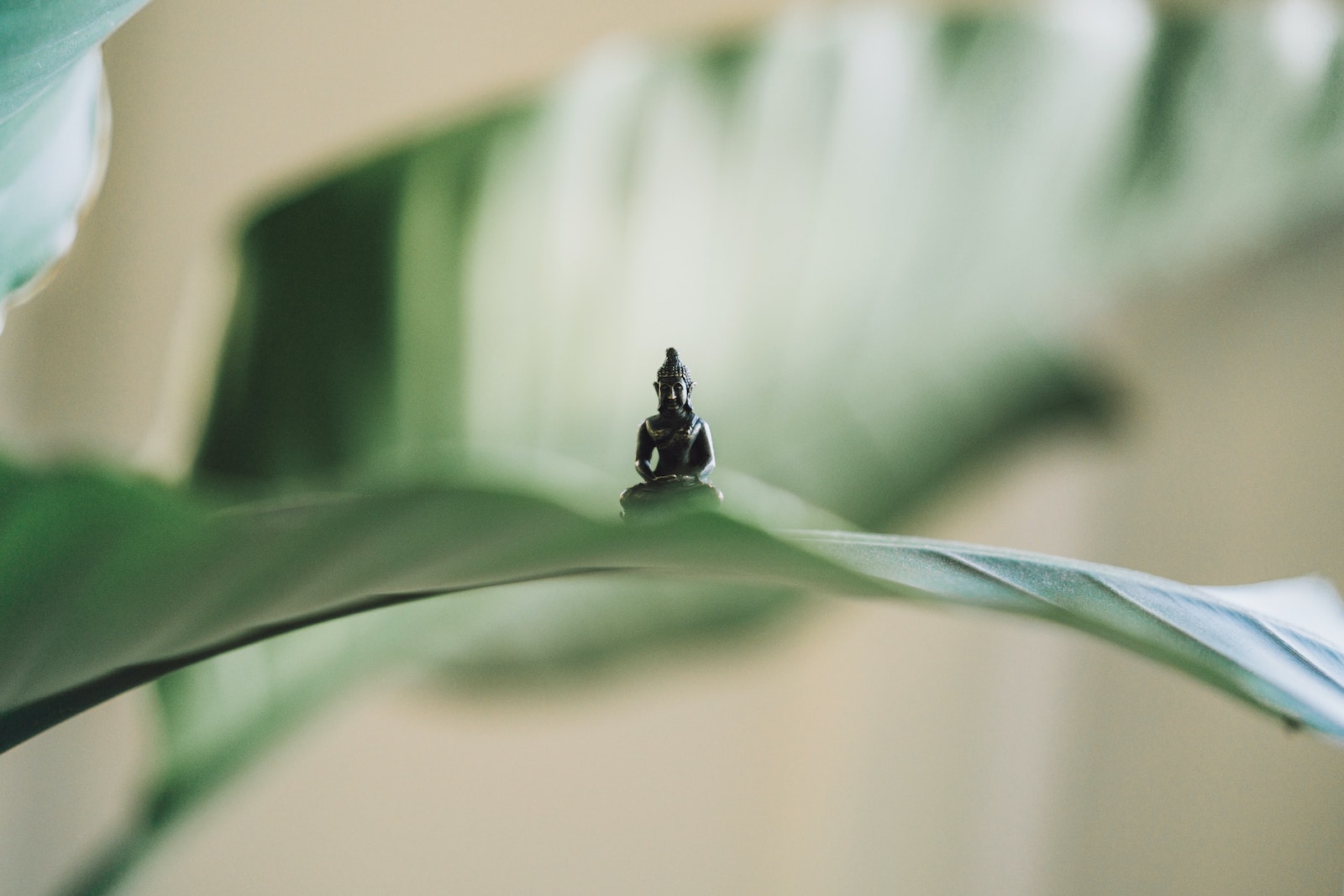I Had A Rare Cancer Diagnosis: Here’s How I’m Embracing Life
I will never be without my lymphoma, and I will never be myself again. But I am, by all accounts, becoming a better version of myself.

Image by mindbodygreen / Lynda Wolters November 5, 2022 While some health issues are visible to the outside world, many people face chronic conditions that don't have externally visible signs or symptoms—also known as invisible illnesses. In mindbodygreen's series, we're giving individuals with invisible illnesses a platform to share their personal experiences. Our hope is their stories will shed light on these conditions and offer solidarity to others facing similar situations. I was at the peak of my physical fitness in my 40s, an exercise fanatic, avid recreational ballroom dancer, hiker, rafter, and horse rider. Yet something was off with my body. 
Advertisement
This ad is displayed using third party content and we do not control its accessibility features.
How I first knew something was wrong
I gradually developed a “sensitive” stomach. Spicy foods, red meat, dairy, wheat, nuts, certain raw vegetables, and anything containing preservatives, additives, or coloring began to cause severe bloat, pain, and bouts of diarrhea. Along with my change in constitution, my periods became erratic, and my heart began to race.
After being diagnosed with hypothyroidism, I was given a daily pill and sent on my way. But the problems continued. I started to dramatically lose weight, which was concerning. My stomach intolerance worsened, turning into nausea and loss of appetite. I reached a point where I could only eat a few bites of organic chicken, apples, blueberries, oats, and green leaf lettuce.
I sought only minimal traditional medical care. Never a big fan of western medicine, I refused any medication other than the thyroid pill. Of course, I saw my physician for my yearly exam and mammogram. Otherwise, if it wasn’t natural, I didn’t want it.
Then, one day in the shower, I noticed a chain of lymph nodes bulging out of the side of my neck, Frankenstein-style. By this time, I weighed just over one hundred pounds, could no longer exercise (walking up a flight of stairs was too much exertion), and could barely keep my eyes open from fatigue.
In the following months, I would be diagnosed with rare, incurable stage 4 Mantle Cell Lymphoma (MCL). And so would begin a years-long trek to save my life.
My journey with lymphoma.
Blood cancers fall into three categories: leukemia, Hodgkin lymphoma, and non-Hodgkin lymphoma. MCL is a non-Hodgkin lymphoma. There are about sixty subtypes of non-Hodgkin Lymphomas, and MCL patients make up only 5% of the entirety of NHL diagnoses1. Among that 5%, three-quarters are men over sixty. I was a 49-year-old female. The average life expectancy with MCL is five years. As one of my sons said, “Mom, you didn’t just draw the short straw. You drew the shortest straw.”
The first year I got treatment, I commuted 1,800 miles one way to MD Anderson Cancer Center in Houston, Texas. I was accepted into a clinical trial which had the potential to extend my life — the hope was ten years, not five. My local oncologist strongly encouraged me to take this path, saying: “You are too young. This is too rare. We can only give you the standard of care.” I had no idea what this meant, not speaking the language of cancer. The doctor explained that he knew only one person in my state with this diagnosis. Unfortunately, that person was an older man who would pass away before my next appointment.
The clinical trial accepted 160 patients. I was number 132.
After nearly a year of sometimes weekly back-and-forth trips to Houston, I entered in-patient chemotherapy. There, I would spend between five and six days in the hospital to receive each round of treatment. Following chemo, I had maintenance infusions for two years. After that, I told my doctor I was divorcing him and his team and that I would get back in touch when I was ready; I had reached my tolerance of doctors, hospitals, and treatment.
Advertisement
This ad is displayed using third party content and we do not control its accessibility features.
Living with my invisible illness.
It has been six years since I started treatment, and three years since I walked away from the scans and appointments. My original prognosis was five years, ten with the trial; I am on six years. As far as I know, my cancer is currently dormant, a word many with an incurable disease prefer over “remission,” as remission is often heard as “cure.” I currently don’t have any outward signs of the disease. But there’s the rub: I will never be without my lymphoma, and I will never be myself again.
My hair, eyebrows, and lashes have grown back, my skin no longer peels, and the boils on my face and head are gone. But what people don’t see is what haunts me daily.
I am fraught with exhaustion, fatigue so great that I nap almost daily. This is not the tiredness you get from staying up past bedtime. This is the slack-jaw, I need to sleep now type of feeling that surpasses everything else–work, play, family, and entertainment. Because of my fatigue, I have difficulty maintaining a normal work life. I need a sofa in my office to rest on, or access to the mother’s nursing room down the hall to lay down, or lately, the ability to work from home to sleep during my lunch hour. My social life doesn’t exist past 7 p.m.
I have chronic joint pain from the effects of the trial drug. There are times when I need walking aids to assist me due to pain and inflammation. I’ve also experienced issues with balance, which I’ve since gone to rehab to work on.
The chemo brain, a fog that has lived with me for years now, is a constant companion that swirls through my thoughts like smoke, clouding my short-term memories and scrambling my words. This makes the simplest of tasks often overwhelming: Grocery shopping, interacting with people, or retelling stories.
And then there is the trio of anxiety, PTSD, and survivor’s guilt that are attached to me like a shadow. Anxiety is the largest of the three. After all, the body that still houses me has betrayed me once. It will surely do it again. The realization that I suffer from PTSD did not manifest until I reached my terminable date–five years, and I learned that nearly every other person on the trial with me had either passed or relapsed. Why haven’t I? When will I? Cue the anxiety. Now, I hyper-panic over everything, sure that each hangnail, bruise, or hiccup is the beast’s return.
The survivor’s guilt is perhaps the most complex and confusing. Most people don’t understand why I would experience guilt for still being alive and thriving. But, you see, MCL is so harsh it is one of only a few cancers on the list of compassion disabilities that allows for disability benefits. However, I still work a full-time job and never required disability, whereas so many other people in my position did. I have not relapsed, whereas nearly all have. I am still highly functioning, whereas so many have died. By all accounts, I am doing miraculously. But inside, I am a disaster.
How I’m coping.
It became evident early in my diagnosis that I needed to find a way to cope or I would drive myself mad in anticipation of relapse and death. I had to find the grace to forgive people who had no idea how to stand by me. I had to give a wide berth to those who look at me and forget I am still fighting, who forget I was or am still unwell, and who want to complain about seemingly trivial issues. Finding grace early on was paramount to my moving forward.
I then realized that a strong support system of like-minded persons (read cancer thrivers, particularly those with my same diagnosis) was essential for my continued positive mental health. The doctors treat the cancer, you are then left to figure out how to pick up the pieces of a shattered life. No one understands my pain and racing thoughts of fear and anxiety better than another MCL patient.
Lastly, I needed to replace my thoughts from who I was to who I am becoming. I am, by all accounts, becoming a better version of myself. I have learned to lean into my down days and allow myself to grieve, feel anguish, and experience the sorrow of where I am and how I got here. I have also learned to live in the present—put the phone down, and engage with my people. If I think about a loved one, I reach out. I no longer wait for them to call me. I have found that telling my friends and even strangers that I love them or admire something about them costs me nothing, and the reward of their smiles fills my cup. Finally, I have learned that my desire to remain positive has sustained me through all the negativity my body has thrust upon me. I believe this will allow me to continue spreading positivity, love, and happiness throughout my days.
Many suffer from my invisible illness, and I urge readers to remember that just because someone looks healthy or as if they have everything together does not mean they are, or they do. We live in a world of “all good” or “I’m fine.” But so many of us are not those things, and most of us have no idea what someone has been through or where they are in life. Let’s remember to practice kindness and grace, so we can all live our best lives.
Advertisement
This ad is displayed using third party content and we do not control its accessibility features.

 JimMin
JimMin 
































